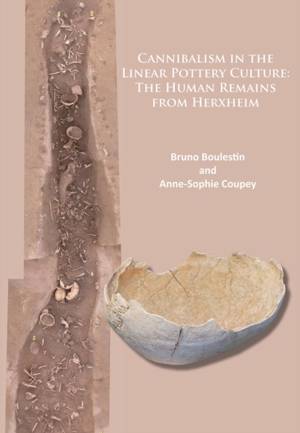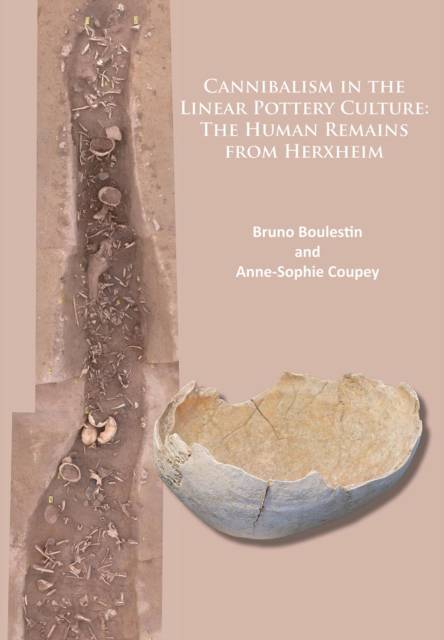
- Retrait gratuit dans votre magasin Club
- 7.000.000 titres dans notre catalogue
- Payer en toute sécurité
- Toujours un magasin près de chez vous
- Retrait gratuit dans votre magasin Club
- 7.000.0000 titres dans notre catalogue
- Payer en toute sécurité
- Toujours un magasin près de chez vous
Cannibalism in the Linear Pottery Culture
The Human Remains from Herxheim
Bruno Boulestin, Anne-Sophie Coupey
Livre broché | Anglais
47,45 €
+ 94 points
Description
The Herxheim enclosure, located in the German region of Palatinate, is one of the major discoveries of the last two decades regarding the Linear Pottery Culture, and probably one of the most significant in advancing understanding of how this culture ended. The spectacular deposits, mostly composed of human remains, recovered on the occasion of the two excavation campaigns carried out on the site, grabbed people's attention and at the same time raised several questions regarding their interpretation, which had so far mostly hesitated between peculiar funerary practices, war and cannibalism. The authors provide here the first extensive study of the human remains found at Herxheim, focusing mainly on those recovered during the 2005-2010 excavation campaign. They first examine the field data in order to reconstruct at best the modalities of deposition of these remains. Next, from the quantitative analyses and those of the bone modifications, they describe the treatments of the dead, showing that they actually were the victims of cannibalistic practices. The nature of this cannibalism is then discussed on the basis of biological, palaeodemographic and isotopic studies, and concludes that an exocannibalism existed linked to armed violence. Finally, the human remains are placed in both their local and chronocultural contexts, and a general interpretation is proposed of the events that unfolded in Herxheim and of the reasons for the social crisis at the end of the Linear Pottery culture in which they took place.
Spécifications
Parties prenantes
- Auteur(s) :
- Editeur:
Contenu
- Nombre de pages :
- 152
- Langue:
- Anglais
Caractéristiques
- EAN:
- 9781784912130
- Date de parution :
- 31-10-15
- Format:
- Livre broché
- Format numérique:
- Trade paperback (VS)
- Dimensions :
- 211 mm x 297 mm
- Poids :
- 593 g

Les avis
Nous publions uniquement les avis qui respectent les conditions requises. Consultez nos conditions pour les avis.






